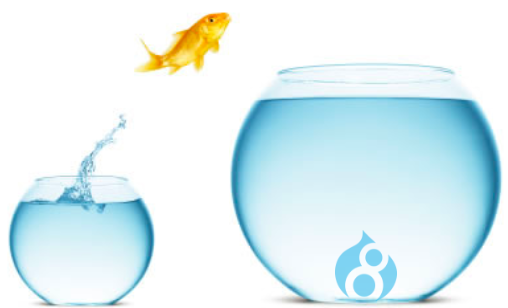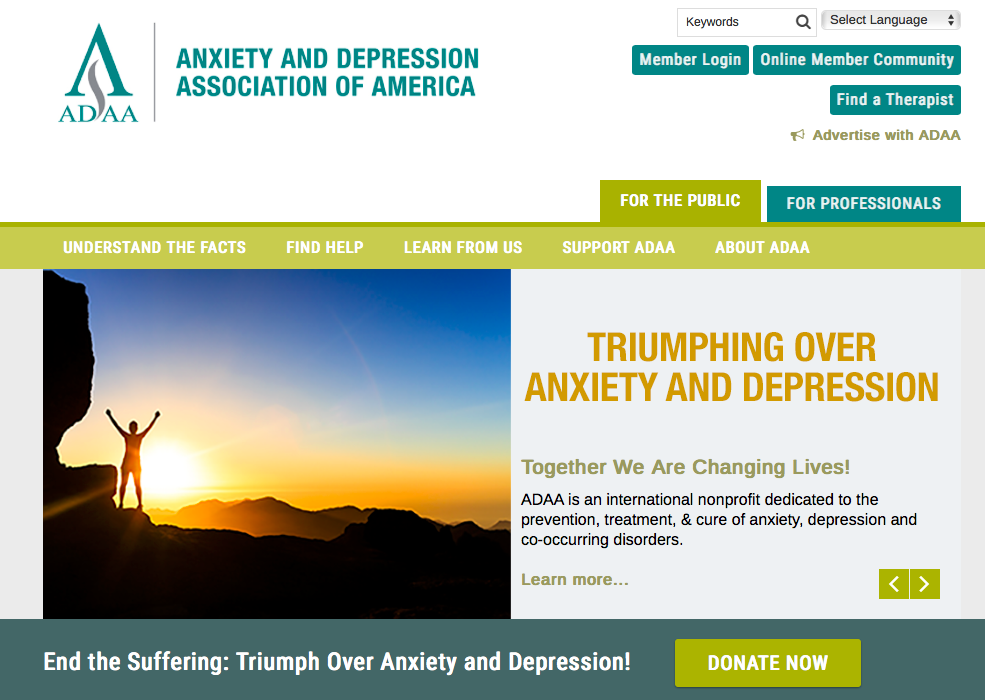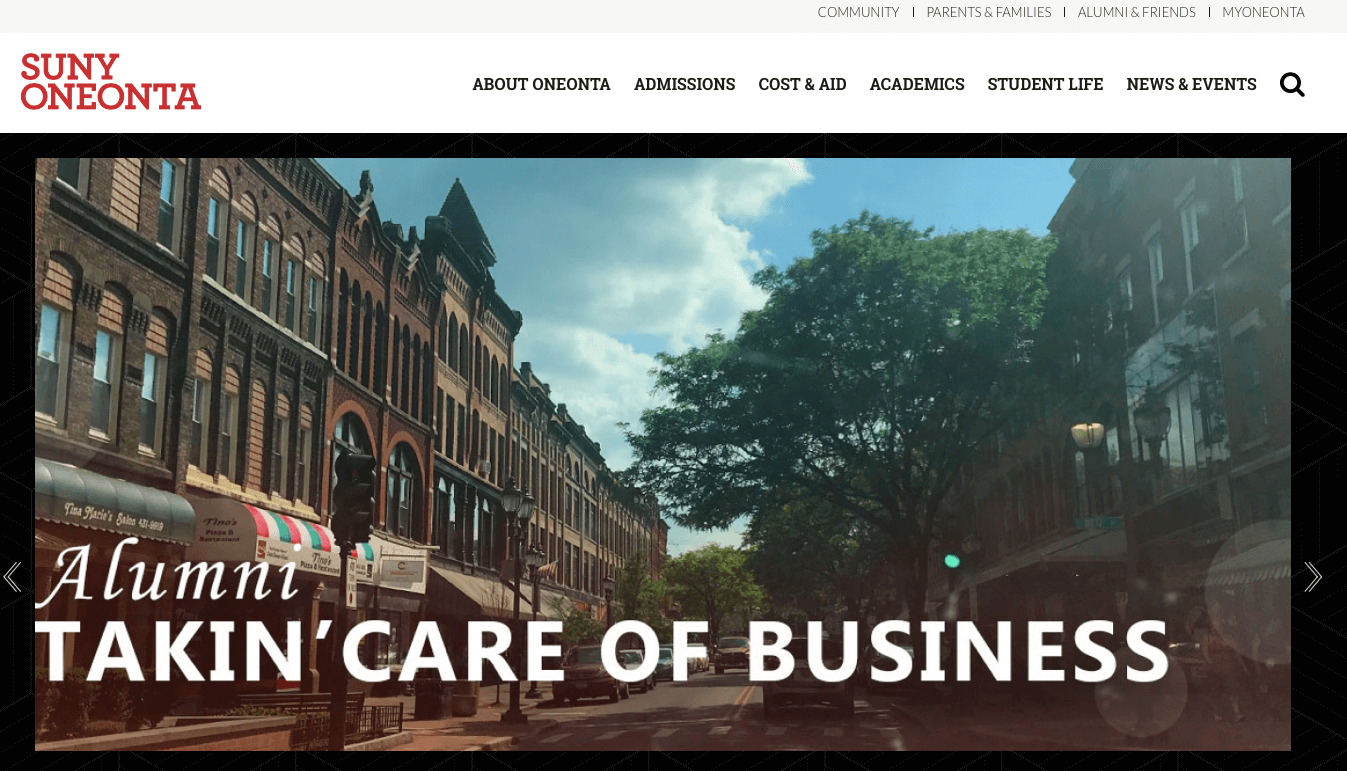The term ‘Migration’ accompanies itself with manifold thoughts into a person’s mind. A politics aficionado may talk about refugees who have migrated to another country for a new lease of life. On the flip side, a bird watcher would be keenly keeping track of migratory birds. In this digital age, a business analyst may think of challenges that come with the upgrade of the Drupal-powered website to a newer version.
Drupal.org website is powered by Drupal 7 and has not been upgraded to Drupal 8 yet! So, what’s the challenge?

For a website to be a high performing space, it is imperative to upgrade to the stable release of the content management system like Drupal. With Drupal 6 already having reached its End of Life in 2016, Drupal 7 and Drupal 8 have been the go-to versions for businesses.
Drupal 8 would be supported by the community at large for a long time to come even after the Drupal 7 is no longer a community supported release on Drupal.org.
Therefore, upgrading to Drupal 8 would be a significantly important business decision with future in mind. But the trials and tribulations for a website in production have to be pondered over while migrating from Drupal 6 or Drupal 7 to Drupal 8.
What should you know before migrating to Drupal 8?
Ever since Drupal 8 was launched, it has been a commendable CMS with stupendous flexibility, enhanced scalability, and accentuated web performance. This has been the driving factor for the businesses wanting to migrate to this improved version of Drupal. Being built around newer technologies like Symfony and Twig, migration process from Drupal 6 or Drupal 7 to Drupal 8 can be attained successfully.
Upgrading to Drupal 8 would be a significantly important business decision with future in mind.

Migration process is not a pushover with issues surrounding data migration and module shifts. It is, therefore, a good approach to be better prepared beforehand to reduce any sort of trouble later on after migration.
Complete theme revamping
After the migration, the site is going to look a lot more different in Drupal 8 than what it originally looked like in Drupal 6 and Drupal 7. This is because the themes and templates that are used in the older version are completely different. So, migration would lead to enormous amount of rework on themes.
Information architecture advancement
The efficacy in building more future-focussed applications would be facilitated by the move to migrate to an advanced architecture. It may seem like an astronomical task in the beginning but it is the perfect way for you to assess your existing information architecture.
Updating the information architecture would not mean that the older version goes obsolete. Instead, it would spell the duplication of your older version into Drupal 8 and performing the fixes based on the new needs. For instance, it allows you to analyse the fields and modules that may not be in use for a while and improve the ones not performing well or even remove them completely.
More emphasis on native OOPS feature of PHP
Object-Oriented Programming (OOPS) concept has also been an integral part of Drupal integrated with the design system. Drupal 8 promotes OOPS features by putting more focus on its importance. Modules, themes, nodes and users are some of the Drupal components that fit the description of an ‘object’.
Increased focus on Drupal 8 core and mobile-first approach
Unlike contributed modules in Drupal 7, core functionalities have been emphasised in Drupal 8. Also, the user interface and the user experience in Drupal 8 are designed to meet mobile user’s needs for maintaining the mobile-friendliness.
Major Issues while upgrading from Drupal 6 or Drupal 7 to Drupal 8
Migrate, Drupal module, comes with the Drupal 8 core which gives a flexible framework for migrating content. But there are certain issues that creep in during migration that needs to be managed.
The trials and tribulations for a website in production has to be pondered over while migrating from Drupal 6 or Drupal 7 to Drupal 8.

What are the major hurdles that have to be taken care of during migration? The primary considerations that have to be handled are listed below:
1. SEO migration
Site migration can lead to a temporary loss of traffic as the search engines would need time to update its index accordingly. Thus, even if some SEO tags or URLs are missing after migration, it can lead to negative impact on website’s SEO rankings.
2. Content migration
Challenges may be faced during content migration. For instance, duplication of content might happen or you might notice some missing content. Moreover, in case, content is using some of the fields created using custom modules, field type will have to be created so that migration is successful.
3. View
One of the major issues that transpires while migrating is the unsuccessful translation of a Drupal core module called Views. It requires an upgrade path for any views that are defined in a Drupal 6 or 7 site and you need to manually create views in Drupal 8 after migration.
Views are entity-based in Drupal 8 and have an entirely different architecture. Most of the functionalities are same but there have been major improvements done related to cache and security.
4. Custom module
Custom modules would have to be rebuilt post migration. Modules in Drupal 6 and Drupal 7 were based on APIs, hook and helper function provided by Drupal core but in Drupal 8 all the modules are based on Symfony. Most of the hooks and helper functions have been replaced with services and development is mostly based on OOPS principles. There isn’t any sort of backward compatibility in modules and that is why they have to be rebuilt in Drupal 8.
5. Contributed modules
In case, contributed modules provide an upgrade path, data stored by Drupal 7 version of that module is also migrated to Drupal 8. If the Drupal 8 port is not available, then a functionality has to be built or the module has to be ported to Drupal 8.
6. Themes
PHPTemplate has been replaced by Twig as the default templating engine in Drupal 8. So, themes would have to be rewritten after migration.
All the PHPTemplate files have to be replaced with the Twig files which means that developers can no longer write custom PHP code in templating files. Preprocess have to be written to modify the rendered output.
7. Node translation
Challenges can be faced during migration of a multilingual site to Drupal 8. Translations in Drupal 8 are stored in completely different way than in Drupal 7 and Drupal 6. Even the Drupal community is working actively on resolving issues in translation migration. To be on the safer side, one should be ready to migrate translation manually or add content again.
8. Specific websites factor
There will be issues with specific websites whose underlying built is not available for Drupal 8. For instance, ecommerce websites that are built on Drupal distribution Commerce Kickstart, which is not on Drupal 8, won’t be able to upgrade. On the contrary, a social intranet developed using Drupal distribution Open Social, which is available on Drupal 8, will be able to upgrade.
This is how we check Drupal 7 to Drupal 8 compatibility!
We have designed a Drupal 7 to Drupal 8 estimation tool that minimises manual audit effort to a great extent. All you need to do is to install our module called Drupal 8 upgrade estimate and get a quick report to better understand what you want.
Technical Issues
There are some more technical issues that are specific to Drupal 6 to Drupal 8 migration and Drupal 7 to Drupal 8 migration. What are they?
Migrating from Drupal 6 to Drupal 8
- Aggregator categories would not be required to be migrated.
- Changing the variable "filter_allowed_protocols" would require entering it into services.yml file.
- Taxonomy term reference field settings have to be manually edited
- Fields may not be visible on the edit form and the node view after the migration.
- A web page may only load a few times which will seem like a broken theme
- The menu_primary_links_source and menu_secondary_links_source variables are not migrated.
- New modules and themes in addition to admin theme (if there is one set) must be enabled before proceeding with the migration.
- Revisions of translated nodes are still not migrated.
- Fields grouped by the Profile module in Drupal 6 won’t be grouped in Drupal 8.
- The combination of selected user values and the current allowed values will comprise the “allowed values” setting of the resulting field in Drupal 8.
- Drupal 8 core does not support PHP filter
- A date could be interpreted differently due to time zones issue
- URL aliases won’t work until language on new Drupal 8 site is enabled
Migrating from Drupal 7 to Drupal 8
- Taxonomy term reference field settings have to be manually edited.
- Migration of id column from Drupal 7’s ban_ip not successful
- Issues with comment types can be seen.
- Drupal 8 core does not support PHP filter
- Issues with plain text fields can be observed
Case Studies
An actual Drupal upgrade case study would depict the challenges occurred and the measures taken to tackle them.
Drupal 6 to Drupal 8
The Anxiety and Depression Association of America (ADAA) is an international non-profit organisation. Their website was built on Drupal 6 which was in dire need of an upgrade.
The ADAA organisation wanted to incorporate a rich and modern user experience, better security and a brand image modernisation. So, in 2015, they opted for a brave decision as to choose Drupal 8, which was on the cusp of its official release, over Drupal 7.

The efficaciousness of Drupal
Drupal 8 was selected for its extensive support towards accessibility standards. It was more suited to meet their intricate requirements in comparison to other content management systems like WordPress and Joomla.
Project challenges and countermeasures
After the migration was performed, the new website encountered two issues for the word-go. First and foremost, the cornucopia of legacy content that was required to be imported and re-cast in the new, restructured format was a herculean task.
Although the existing import module at the time worked for most of the content that it supported, some key areas created issues while manipulating media files. Thus, the module was extended with custom methods that allowed to enable the export process to be performed with an absolute efficacy.
Secondly, delivering an administrative interface, that could enable structured content to be edited logically, was a formidable task. This led to significant investment in new tools and difficulties in adapting to the new Drupal 8 framework. The hurdle was overcome successfully and new modern features could be delivered rapidly and effectively.
Drupal 7 to Drupal 8
SUNY Oneonta, member of the State University of New York, had public-facing site which was operated on the base of a Drupal 7 installation. The site did not adhere to best practices or standards in coding, theming or the architecture.
Interruptions in the services, downtimes, and the difficulties while migrating key pages into the responsive Drupal environment proved troublesome in the college’s recruitment efforts.

Taking a plunge into Drupal
Previous website neither had a stable environment nor addressed the underlying architectural drawbacks. Being Drupal savvy, SUNY Oneonta were eager to migrate from their existing setup in Drupal 7 to Drupal 8.
Project objectives
The most important objective was to revamp their public-facing website and leverage the capabilities of Drupal 8.
- Retain the existing Drupal 7 website design and upgrade to a functional responsive design
- Retain most of the Drupal 7 navigation structure
- Ensure that there is very less or no downtime in addition to flexibility for future enhancements
- Betterments in the workflow, underlying architecture, user experience, translatability and accessibility
- Launch the website at the stipulated time frame of 5 months
Project outcome
The results were staggering with faster performing site, on-point informative content and much better search results. In addition to this,
- Adhered to the project budget with the retention of current brand and general site design.
- Reduction in the count of content types from 21 to 10 in addition to the number of nodes from 3000 to less than 1100.
- Usage of views and other such standard Drupal implementation methods for the listicles involving items and featured content.
- Reduction in the redundancy of template file functionality
- Enhanced flexibility for permitting future alterations to the website content and structure.
- Test content and some published content purged
- Site was built on the basis of accessibility standards set by Federal Section 508 Standards and New York State Policy NYS-P08- 005 in addition to being fully responsive across screens.
How will the upgrade from Drupal 8 to Drupal 9 happen?
Drupal community is working on the upgrade from Drupal 8 to Drupal 9. How will that transpire exactly? Old systems will be deprecated instead of being removed by encouraging the module maintainers to update to the new systems. That is, the modules and custom code will stay in working condition. More innovation will lead to more deprecated code in Drupal 8.
Over time, maintenance of backwards compatibility would become more intricate. Thus, point will be reached when too much of deprecated code is there in Drupal 8. At that time, deprecated systems will be removed and released as Drupal 9.
So, Drupal 9.0 should be almost similar to the last release of Drupal 8 excluding the deprecated code. Upgrading from Drupal’s latest version to Drupal 9.0.0 should be as streamlined as the upgrading of minor versions of Drupal 8 (eg. Drupal 8.5 to Drupal 8.6). Therefore, Drupal 9 offers a clean slate to innovate more swiftly.
Conclusion
Upscaling the digital business involves continuous improvement of online presence. One of the significant business decisions comes with the upgrading of website from the existing content management platform to its latest and improved version.
Drupal 6 or Drupal 7 to Drupal 8 migration is a worthy choice. Nonetheless it is challenging and involves migration issues that would require a lot of developmental effort. Businesses looking for a great future can benefit a lot by this brave decision which may look troublesome at the start but is essentially meritorious.
We provide upgrade assistance and help in understanding whether or not to migrate a business site to Drupal 8 or not. Contact at [email protected] to migrate to Drupal 8.
Subscribe
Related Blogs
Inside the Drupal AI Summit: Themes, Speaker and What To Expect

“ The web is changing fast, and AI is rewriting the rules. It writes content, builds pages, and answers questions directly,…
FOST and Drupal AI Initiative: Next Era of Responsible AI

Three years after the launch of generative AI tools marked a new age for artificial intelligence, almost 90% of survey…
Drupal AI Ecosystem Part 5: AI Content Suggestions

Drupal has steadily evolved from being just a content management system into a flexible platform that incorporates emerging…




